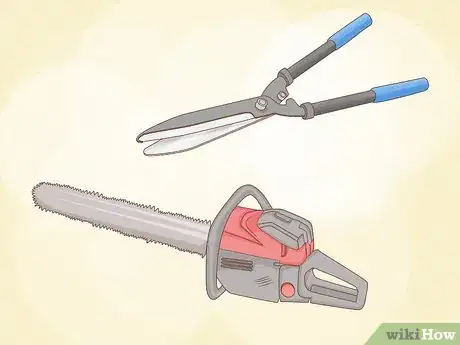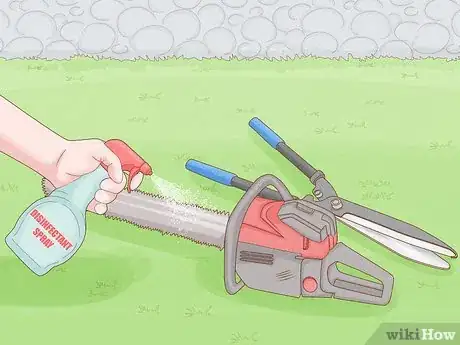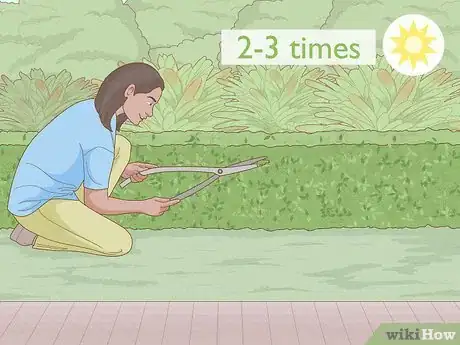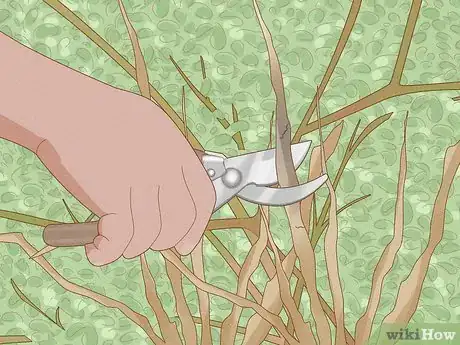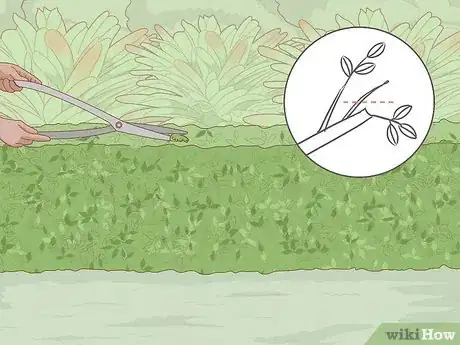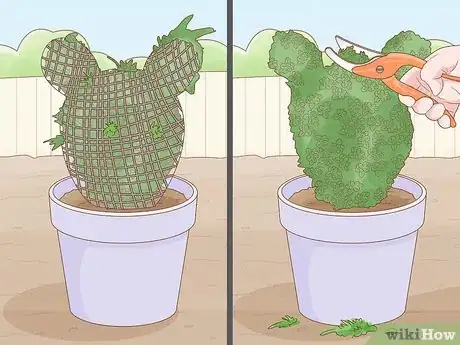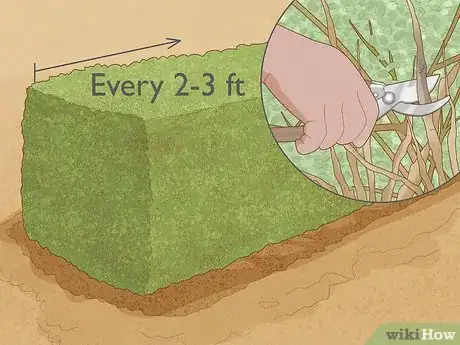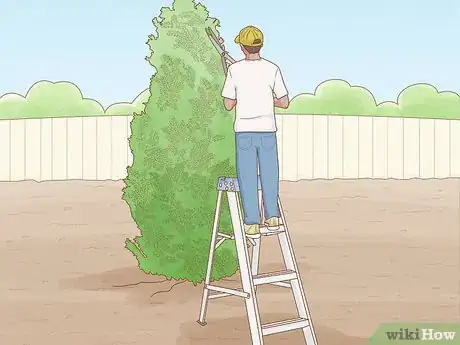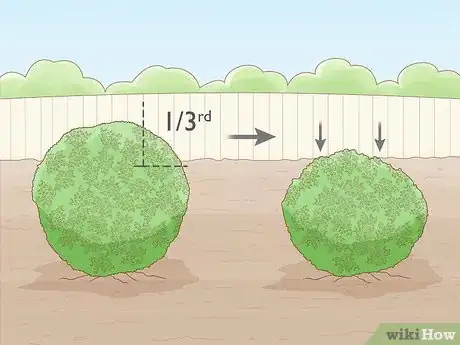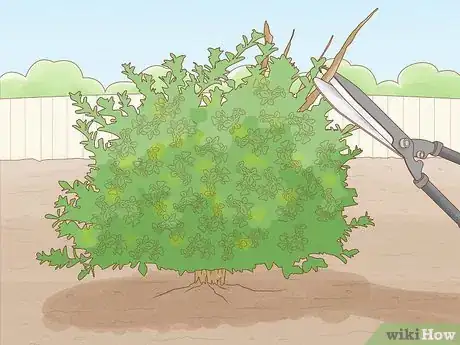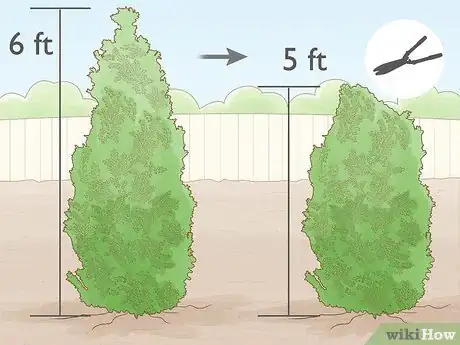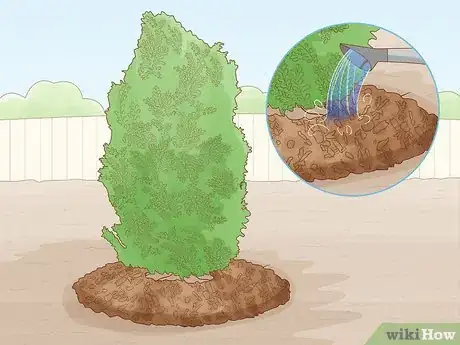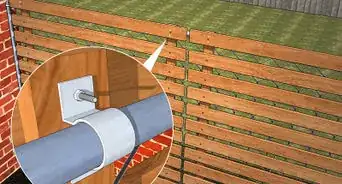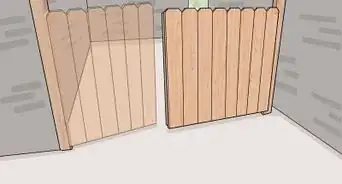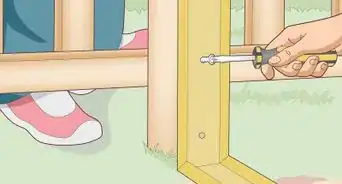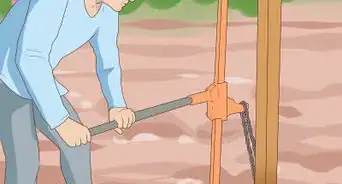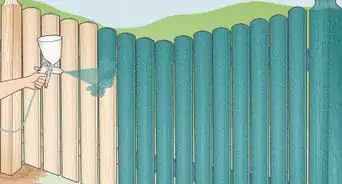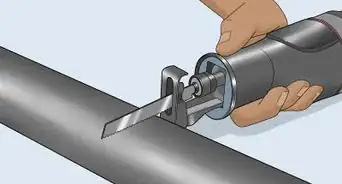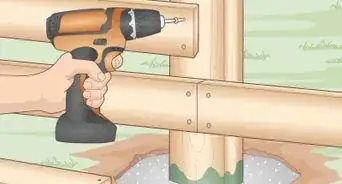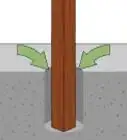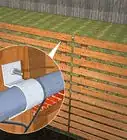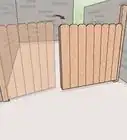This article was co-authored by Sina Kamran and by wikiHow staff writer, Eric McClure. Sina Kamran is a Hardscaping Specialist and the Owner of Design Scapes, Inc. in Santa Monica, California. With over 15 years of experience, he specializes in customized, site-specific hardscaping and landscaping design/build projects. He's a certified National Concrete Masonry Association (NCMA) designer, a certified installer with the Interlocking Concrete Pavement Institute (ICPI), and a Rain Bird Certified Irrigation Professional. Additionally, Design Scapes, Inc. has many 5-star rated reviews.
There are 24 references cited in this article, which can be found at the bottom of the page.
This article has been viewed 10,470 times.
Privet hedges are pretty hardy and forgiving when it comes to maintenance, so if this is your first time breaking those pruning shears out, don’t worry! These shrubs tend to be extremely durable and easy to care for.[1] While there are several different varieties, every type of privet is pruned essentially the same way; you do maintenance trimming 2 times during the growing season, and cut the shrub back in the late winter if it’s getting too big or dense.
Steps
Tools and Prep
-
1Wear eye protection and thick gloves to protect yourself. Since privet is a hardwood shrub, it can splinter and snap when you cut it. Protect your hands by throwing on some thick gardening gloves, and keep your eyes safe with protective goggles.[2]
- If it’s cool out, throw on a long-sleeved shirt and pants to play it safe.
- This isn’t a super dangerous process or anything, but it’s better to be safe than sorry!
-
2Use a power trimmer or hedge shears to safely trim your shrubs. For maintenance pruning, you’ll get by just fine with standard hedge shears or an electric power trimmer.[3] To hard prune really large shrubs, you may need a manual pruning saw.[4]
- Use a whetstone to sharpen the blade on hedge shears if it looks dull.
Advertisement -
3Disinfect cutting tools to prevent the spread of diseases and bacteria. The easiest way to do this is to fill a small cup with isopropyl alcohol, submerge the blades in it, and wipe them clean. Alternatively, soak a cloth in pine oil, diluted chlorine beach, or trisodium phosphate and wipe the blades down thoroughly. This keeps .[5]
- A standard household cleaner also works in a pinch.[6]
-
4Grab a step ladder to assist you if hedges are taller than eye level. If your hedges are super tall, grab an orchard ladder to climb up and reach the top of your hedges. For privet, you likely won’t need anything beyond a regular step ladder unless your hedges are really out of hand. When using your ladder, never stand on the top step and always place the ladder on a firm, even surface before climbing up.[7]
- Never use an electric trimmer above shoulder height. If your shrubs are exceptionally tall, use regular shears to cut the taller portions of your shrubs.
- Privet can grow up to 15 feet (4.6 m) if you don’t prune regularly, so try to prune often enough that you don’t need that orchard ladder.[8]
Maintenance Pruning (Summer)
-
1Trim your hedges 2 times during the summer to keep them healthy. Typically, you need to prune privet hedges around June or August, but you may need to prune sooner if it’s growing fast. If the shrub looks asymmetrical or sunlight can’t penetrate through the leafy layer, it's time to prune.[9]
- If it’s an especially dry season or a colder summer, you may only need to prune once to keep your hedges in check.
-
2Cut dead branches off from the main stem to remove them. Walk around the shrub and scan for branches with dead or brown leaves. Cut them off from the base of the main branch. Clip in a straight line just above the collar of the branch if you have hedge shears, or work your trimmer or pruning saw back and forth to hack the branch off.[10]
- The collar is the thicker portion of the branch where it feeds into the main stem. Leave this portion intact to keep the shrub healthy.[11]
-
3Clip above new leaves to stimulate healthy growth. Look for longer branches with bigger, darker leaves. Clip them off just above newer leaves to encourage new, healthy growth and keep the leaves looking bright and green.[12]
- You can start at any part of the plant you’d like. If the shrub is so big that you need a step ladder to reach the top of the plant, clear out the stuff around eye level and below first. This way, your knees won’t get poked by branches as you’re trimming the top of the plant.
-
4Use a template to cut formal hedges into your preferred shape. If you have formal shrubs that are a particular shape, clip off the old growth that extends past the shape of your shrub. You can use a spirit level, taut piece of string, or cardboard template to identify any branches that are overgrown. Simply hold the guide up where you want the edge of the plant to rest and clip off anything that extends past it.[13]
- You may need to prune formal hedges more often if you really want them to keep their shape.[14]
-
5Remove a few interior branches every 2–3 ft (0.61–0.91 m) or so. Every couple of steps you take, look for any dead or weak branches in the shrub’s interior. Cut them out as close to the ground as you can, or trim them down in sections to remove them completely.[15] This will give your shrub some interior room for more sunlight to get in. It will also encourage healthy growth inside the plant.[16]
- Don’t cut out any branches with lots of smaller offshoots if they have healthy leaves. You’re just looking for bare branches here.
-
6Thin the top of the hedge a bit narrower than the base to wrap it up. Once you’ve pruned most of the plant, grab your step ladder or reach up and cut back the smaller branches at the top from the larger branches they attach to.[17] Privet tends to grow up and out at an angle, so this will keep your shrub from growing asymmetrically. It will also make it easier for sunlight to reach the sides of the shrub where all of those beautiful leaves are.[18]
- If you’re formally pruning the shrub to be a specific shape, feel free to skip this step. Just keep in mind that you may need to prune monthly to maintain that fancy shape.[19]
Hard Pruning (Winter)
-
1Cut overgrown hedges in late winter to stimulate growth. Hard pruning in the late winter or early spring keeps it healthy.[20] You may also want to hard prune if your plant is at, or near, your preferred size. Since privet grows a lot in the growing season, it’s going to get really big if it’s already at your ideal size.[21]
- If your shrub isn’t too big for you and it isn’t close to overgrowing, you do not need to hard prune.
- Hard pruning is the process of cutting all healthy branches back to encourage growth in the growing season. Hard pruning is often referred to as renewal, or renovation pruning.
- If you’re worried about the aesthetic impact of cutting your shrub down, only do one side of the hedge this year. Next year, do the other side.
-
2Trim away about 1/3 of the shrub but don't cut off more than that. If at any point in this process you think you’re getting close to removing more than 1/3 of the plant, just stop. Your shrub is likely to struggle to regrow if you cut too much of it off. Your overarching goal here is just to remove the dead branches and stems to improve airflow and encourage healthy growth, not cut your entire shrub down.[22]
- A lot of common sense comes into play here. If a branch seems unhealthy, oddly-shaped, or too big, it’s a good candidate for pruning.
-
3Remove the older, bare stems from the interior of the plant. The older stems will typically be the thickest branches in the plant’s interior. Leave any stems with a lot of healthy branches on them, but cut out any bare stems where it meets the ground. This will open up the interior of the plant so sunlight can get in once the growing season starts. It will also increase the air flow and help your plant stay healthy.[23]
- If you can’t reach the stems because there are a bunch of branches blocking your path, feel free to cut them back to make a path. You’re going to trim a lot of that stuff back anyway.
-
4Trim back any obviously dead branches to leave room for newer growth. The less light a branch is getting, the more likely it is to be die during the winter.[24] Inspect each portion of your shrub and look for dead branches. Clip them off near the base of the stem they attach to. Work your way around the plant and cut back these suboptimal branches.[25]
- If you aren’t sure if a branch is dead, scratch it with your pruning saw or shears. If it’s brittle and brown, it’s dead. If it’s green and softer, it’s still healthy.[26]
-
5Cut the shrub down roughly 1 ft (0.30 m) lower than you want it to grow. If you want your shrub to be 6 ft (1.8 m) tall, cut every branch and stem that extends higher than 5 ft (1.5 m).[27] Either grab your step ladder or reach up and start cutting. Remove every branch or stem where it connects to a larger stem. Keep cutting these branches and stems until your plant is short enough for you.[28]
- If any of the main stems are too tall, cut them down from the base. However, if this will remove a seriously large portion of the plant, just cut right above any outward facing bud to shorten it.
-
6Fertilize the soil with a 10-10-10 mixture after pruning the shrub. A 10-10-10 water-soluble mixture is ideal, but any general-purpose fertilizer will do the trick. Work the fertilizer into the soil to ensure the shrub gets a healthy dose of nutrients before the growing season starts.[29]
- If the last season’s frost hasn’t passed, wait on this. You should only do this once its warm enough to water your plant.
-
7Water and mulch your shrub thoroughly to prepare it for spring growth. Grab a hose or a few buckets of water and thoroughly water the soil around your shrub. This will work the fertilizer into the soil and give your freshly-pruned shrub a healthy boost. Then, spread a layer of mulch over the base of your shrub to protect it and wait for spring to start![30]
- Don’t pool the mulch up around the trunk of each stem. Just spread it out in a smooth, even layer. The mulch shouldn’t cover the base of any stems, just the soil.[31]
Warnings
- Before you do any summer pruning, take a quick peek inside of your hedges to see if there are any nesting birds. If there are, either wait for them to move on or contact your local wildlife department to have the nest removed.[32]⧼thumbs_response⧽
- If you’re using an electric trimmer, keep your hands on the handles while you’re operating it. Never hold the trimmer with one hand, and work slowly to avoid blade slippage.[33]⧼thumbs_response⧽
Things You’ll Need
- Pruning shears
- Electric trimmer or pruning saw
- Isopropyl alcohol or household cleaner
- Cloth
- Gloves
- Protective eyewear
- Water
- Mulch
- Ladder (optional)
- Formal hedge template (optional)
Expert Interview

Thanks for reading our article! If you'd like to learn more about trimming hedges, check out our in-depth interview with Sina Kamran.
References
- ↑ https://www.thisoldhouse.com/landscaping/21015336/how-to-maintain-hedges
- ↑ https://www.rhs.org.uk/advice/profile?pid=353
- ↑ https://www.canr.msu.edu/news/pruning_evergreen_shrubs
- ↑ https://youtu.be/tBarXU2EUDw?t=216
- ↑ https://ipm.missouri.edu/MEG/2018/1/cleaning_pruning_tools/
- ↑ https://youtu.be/fzwslJP4uPw?t=14
- ↑ https://ohioline.osu.edu/factsheet/aex-79039
- ↑ https://extension.umd.edu/hgic/topics/privet
- ↑ https://www.rhs.org.uk/advice/profile?pid=352
- ↑ https://youtu.be/7Z_nB6-npAY?t=69
- ↑ https://aggie-horticulture.tamu.edu/earthkind/landscape/proper-pruning-techniques/
- ↑ https://youtu.be/7Z_nB6-npAY?t=216
- ↑ https://www.rhs.org.uk/advice/profile?pid=353
- ↑ https://www.southernliving.com/garden/shrubs/sunshine-ligustrum
- ↑ https://www.bhg.com/gardening/plant-dictionary/shrub/privet/
- ↑ https://www.thisoldhouse.com/landscaping/21015336/how-to-maintain-hedges
- ↑ https://polk.ces.ncsu.edu/pruningcalendar/
- ↑ https://aggie-horticulture.tamu.edu/earthkind/landscape/proper-pruning-techniques/
- ↑ https://aggie-horticulture.tamu.edu/earthkind/landscape/proper-pruning-techniques/
- ↑ https://www.gardenersworld.com/how-to/grow-plants/will-privet-cope-with-hard-pruning/
- ↑ https://extension.psu.edu/pruning-flowering-shrubs
- ↑ https://polk.ces.ncsu.edu/pruningcalendar/
- ↑ https://extension.psu.edu/pruning-flowering-shrubs
- ↑ https://extension.unh.edu/blog/how-can-i-help-my-holly-bush-brown-leaves-and-dead-branches-it
- ↑ https://youtu.be/7Z_nB6-npAY?t=79
- ↑ https://extension.unh.edu/blog/how-can-i-help-my-holly-bush-brown-leaves-and-dead-branches-it
- ↑ https://youtu.be/tBarXU2EUDw?t=344
- ↑ https://hgic.clemson.edu/factsheet/ligustrum/
- ↑ https://www.stltoday.com/lifestyles/home-and-garden/rejuvenate-an-old-overgrown-privet-hedge-by-cutting-it-back-severely/article_970150f5-f1b9-5c30-9794-fc215e693517.html
- ↑ https://www.gardenersworld.com/how-to/grow-plants/will-privet-cope-with-hard-pruning/
- ↑ https://www.mortonarb.org/trees-plants/tree-and-plant-advice/horticulture-care/mulching-trees-and-shrubs
- ↑ https://www.rhs.org.uk/advice/profile?pid=352
- ↑ https://www.echo-usa.com/getattachment/22ee5cf1-b4c3-4a57-9613-93da8788c629/HedgeTrimmers.pdf

